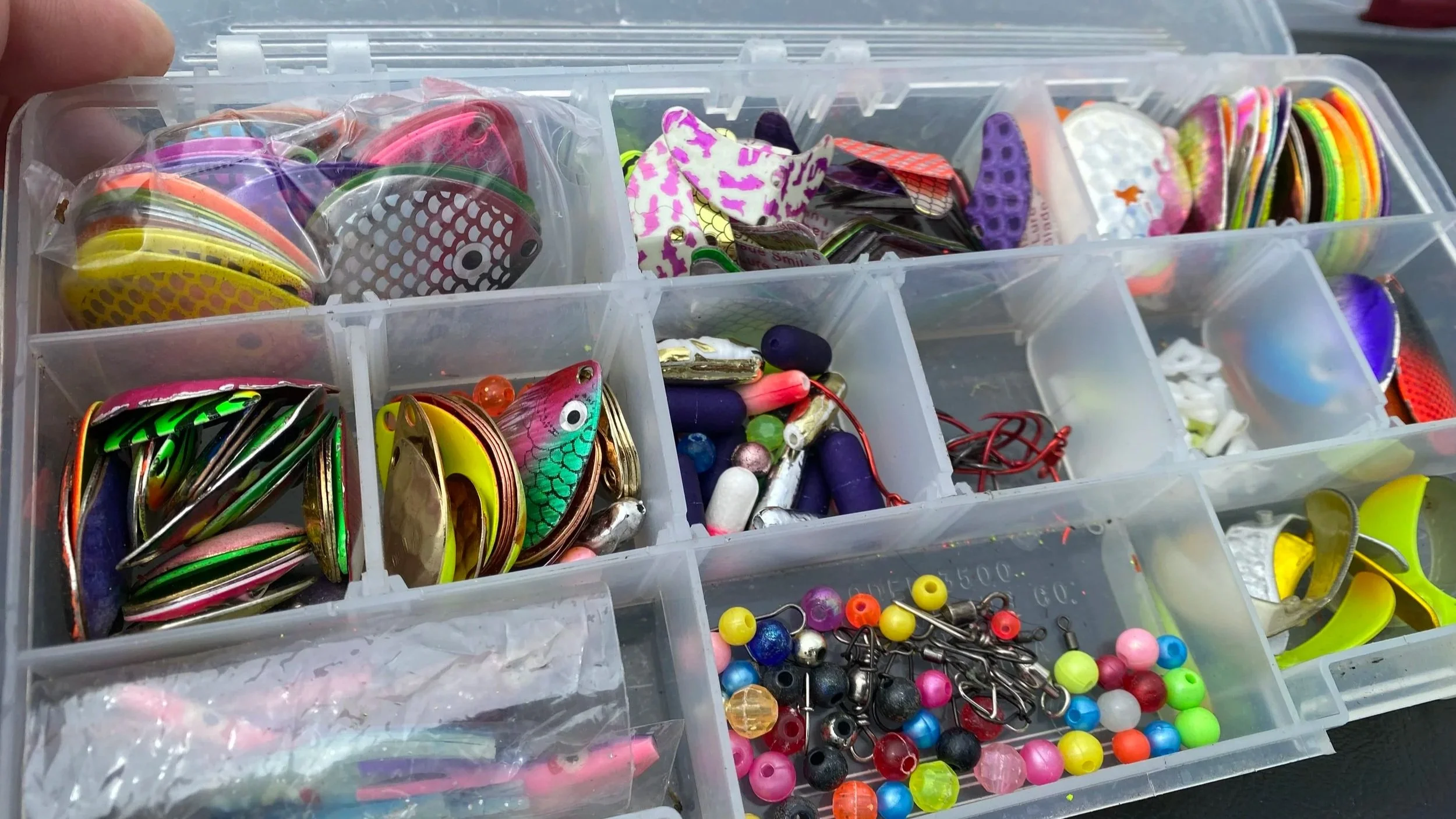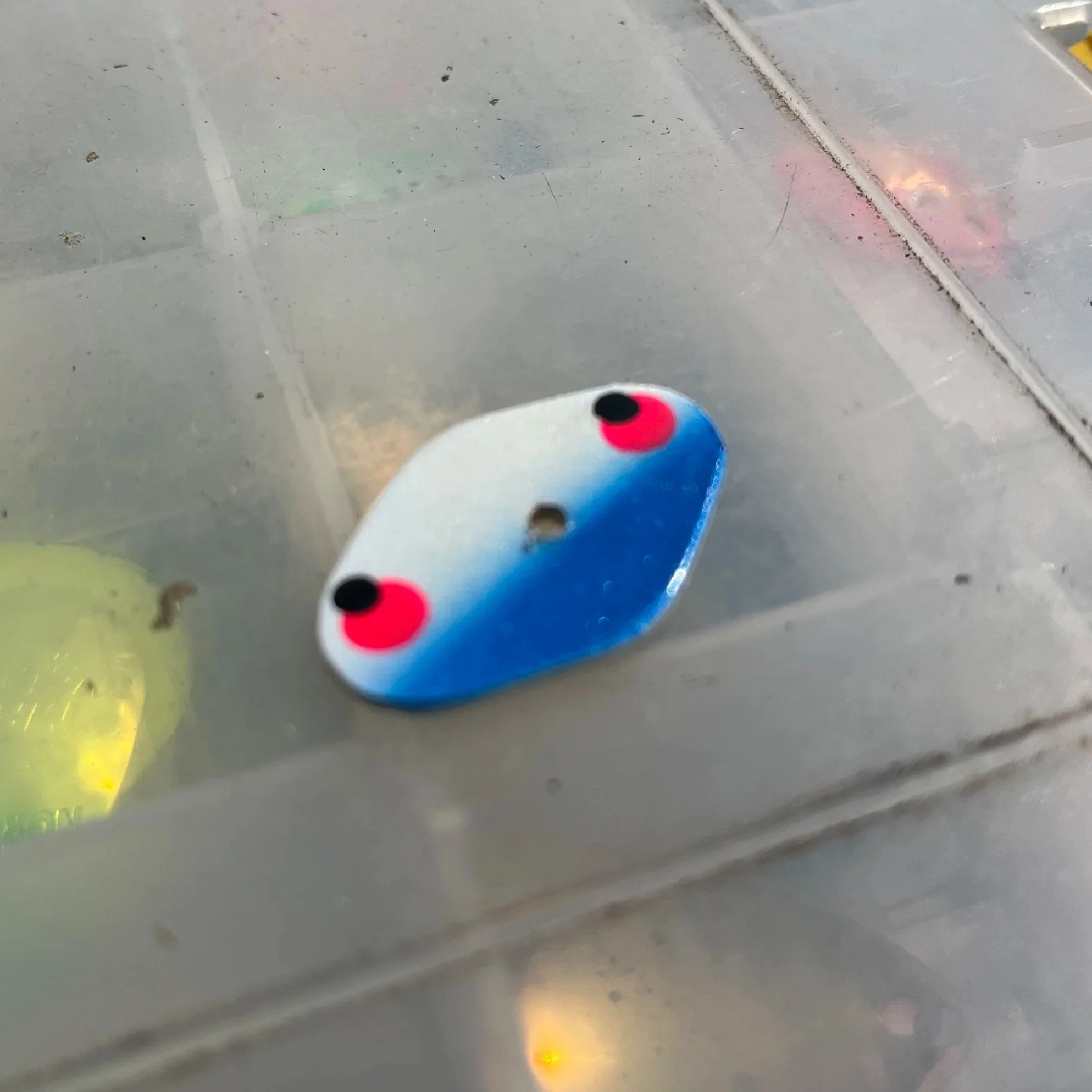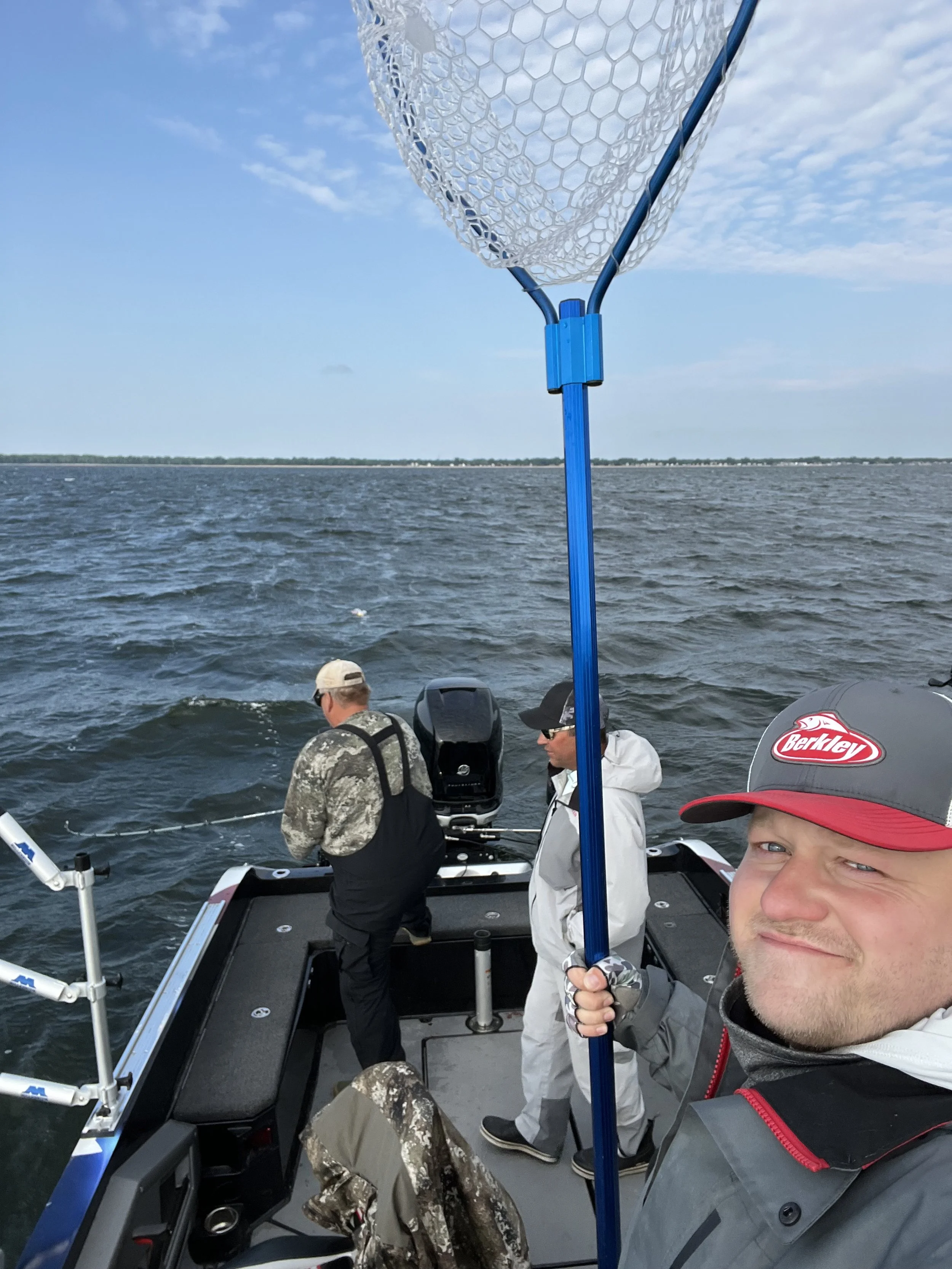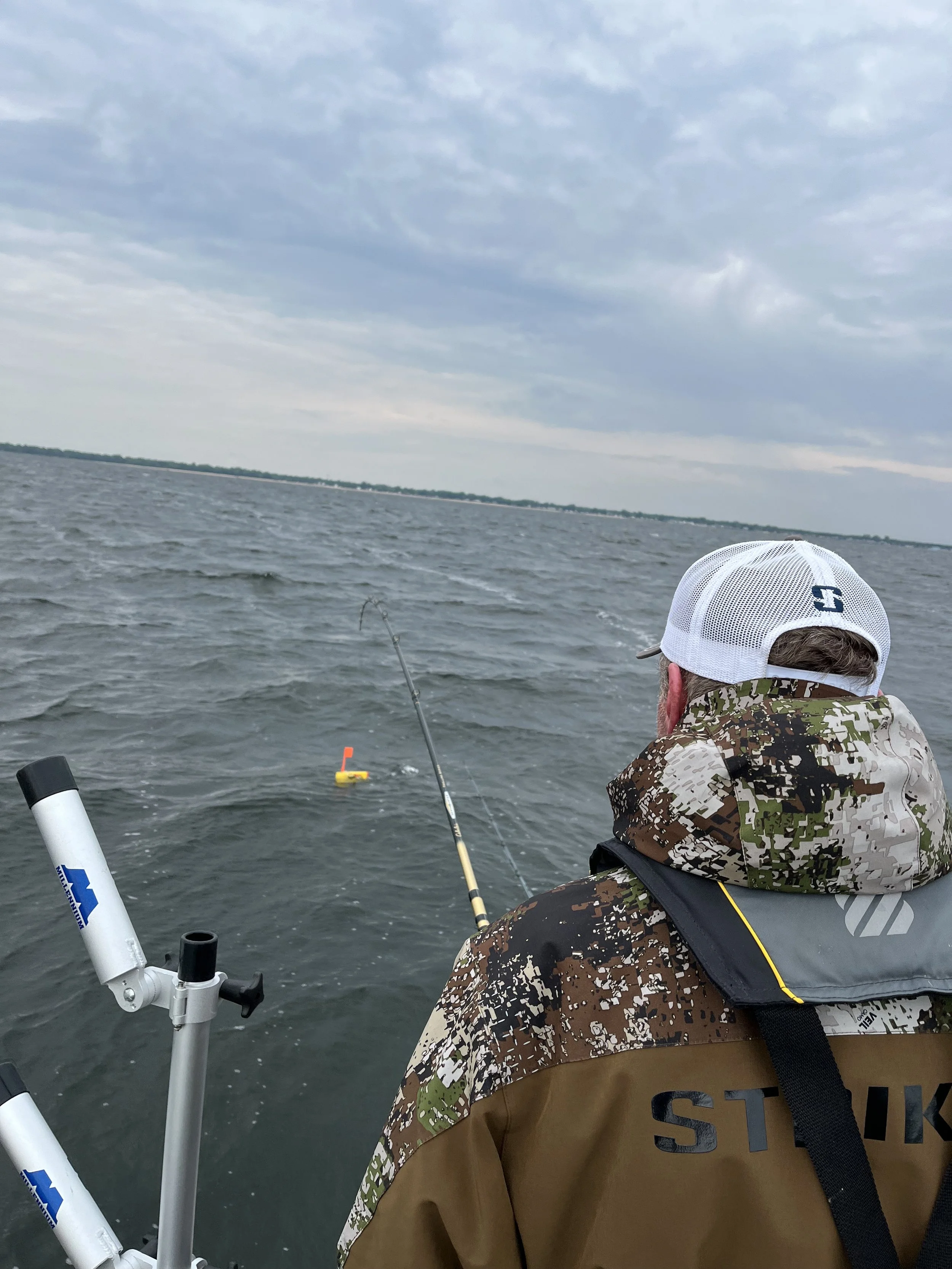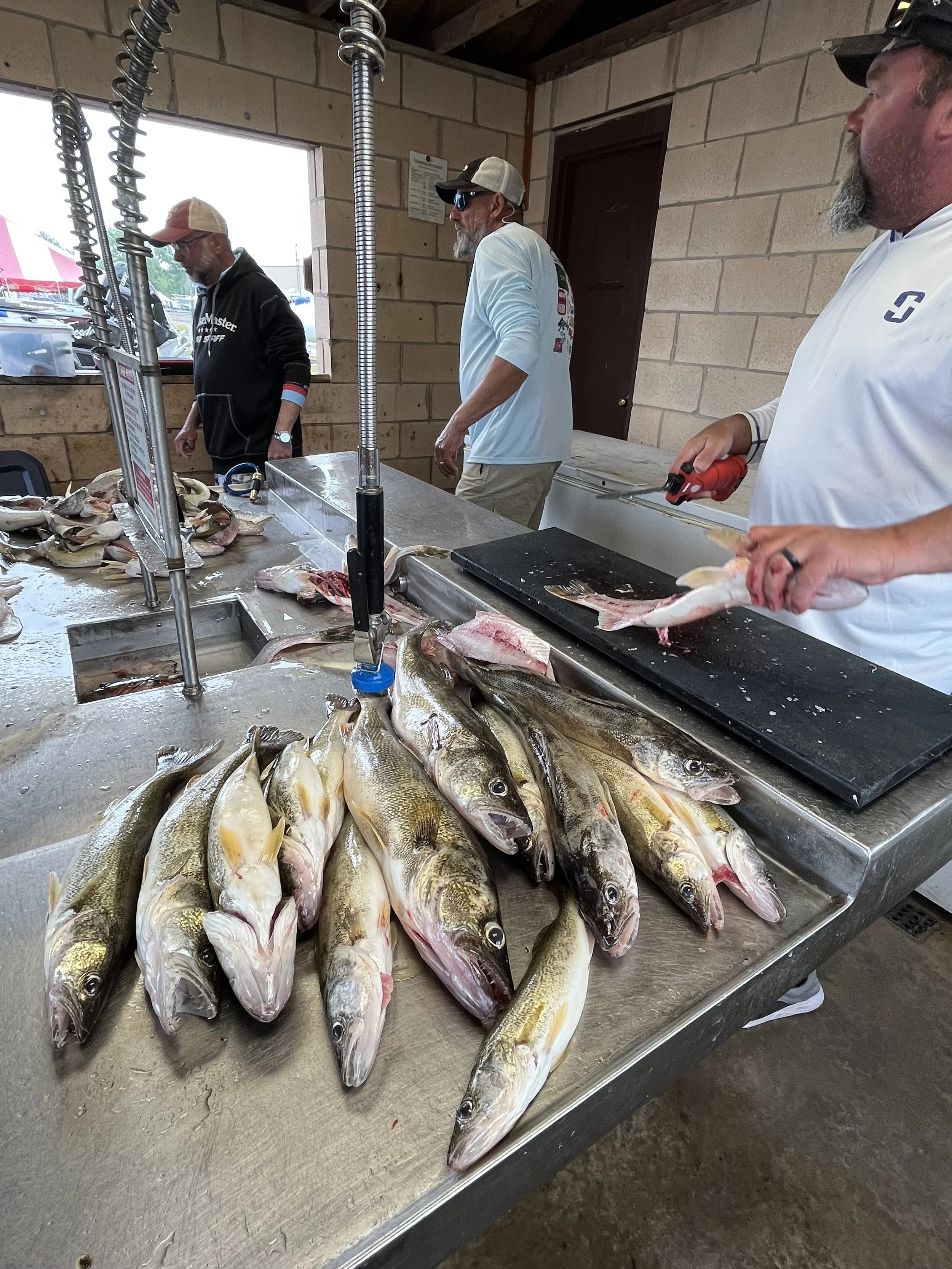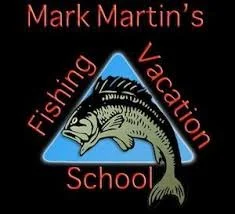Secrets in the Spin- Unconventional Blades to Harness Lethargic Walleye
“There are more options when pulling worm harnesses than the standard Colorado blade.”
Spinnin and winnin to successful limits of walleye trolling harnesses. Hooks, beads, blades, and bait, “pulling meat” is so much more than allowing these rigs to do all of the work. A favorite method of many across the great lakes, reservoirs, inland systems- wherever there are walleyes- this technique works.
A nightcrawler harness appears to be a simple contraption, but like anything that goes with fishing, there are layers of complexities that yield proven results when the going gets tough. Seasons pros and captains will share that it really comes down to two factors: blade style and speed.

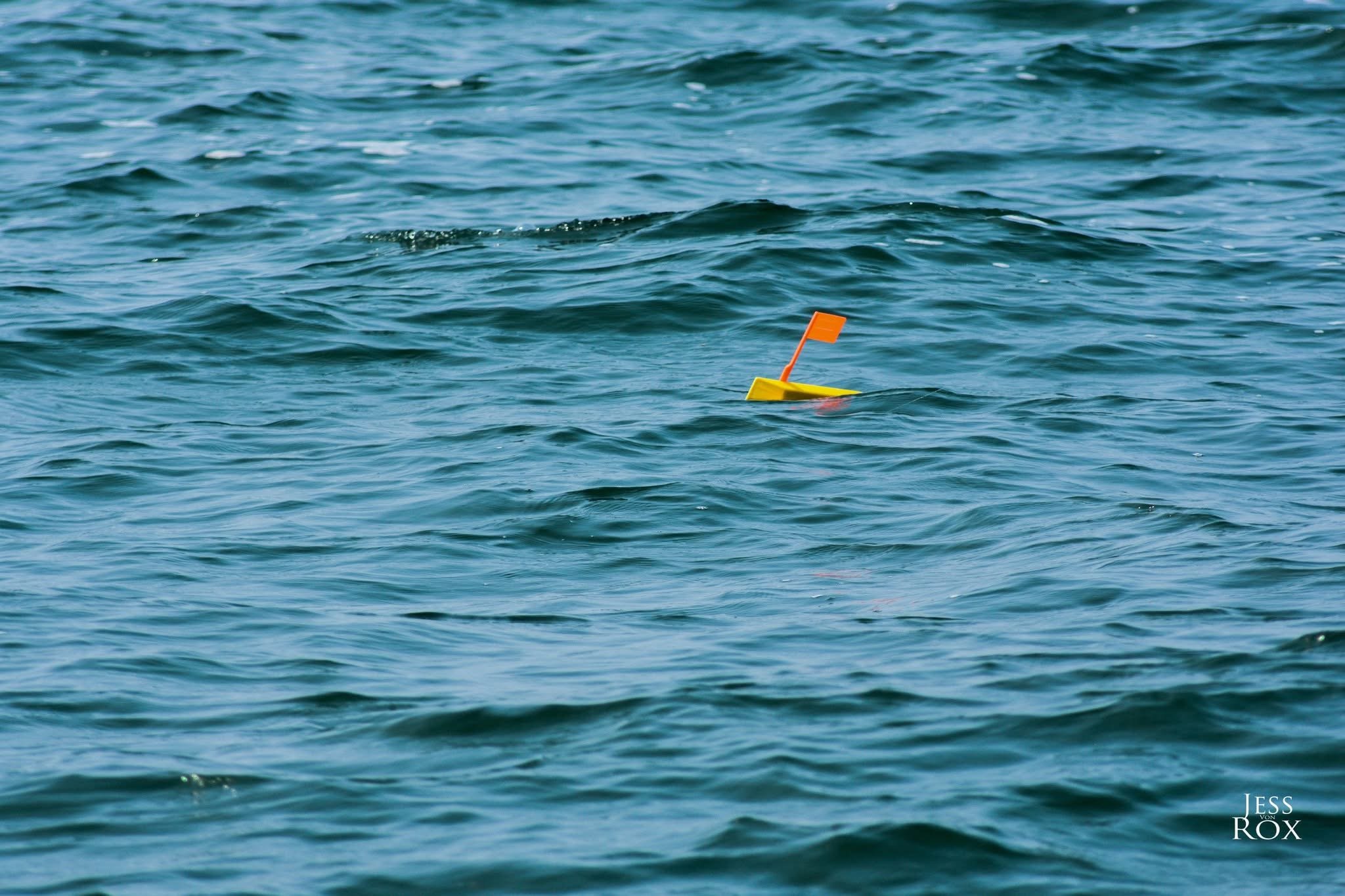
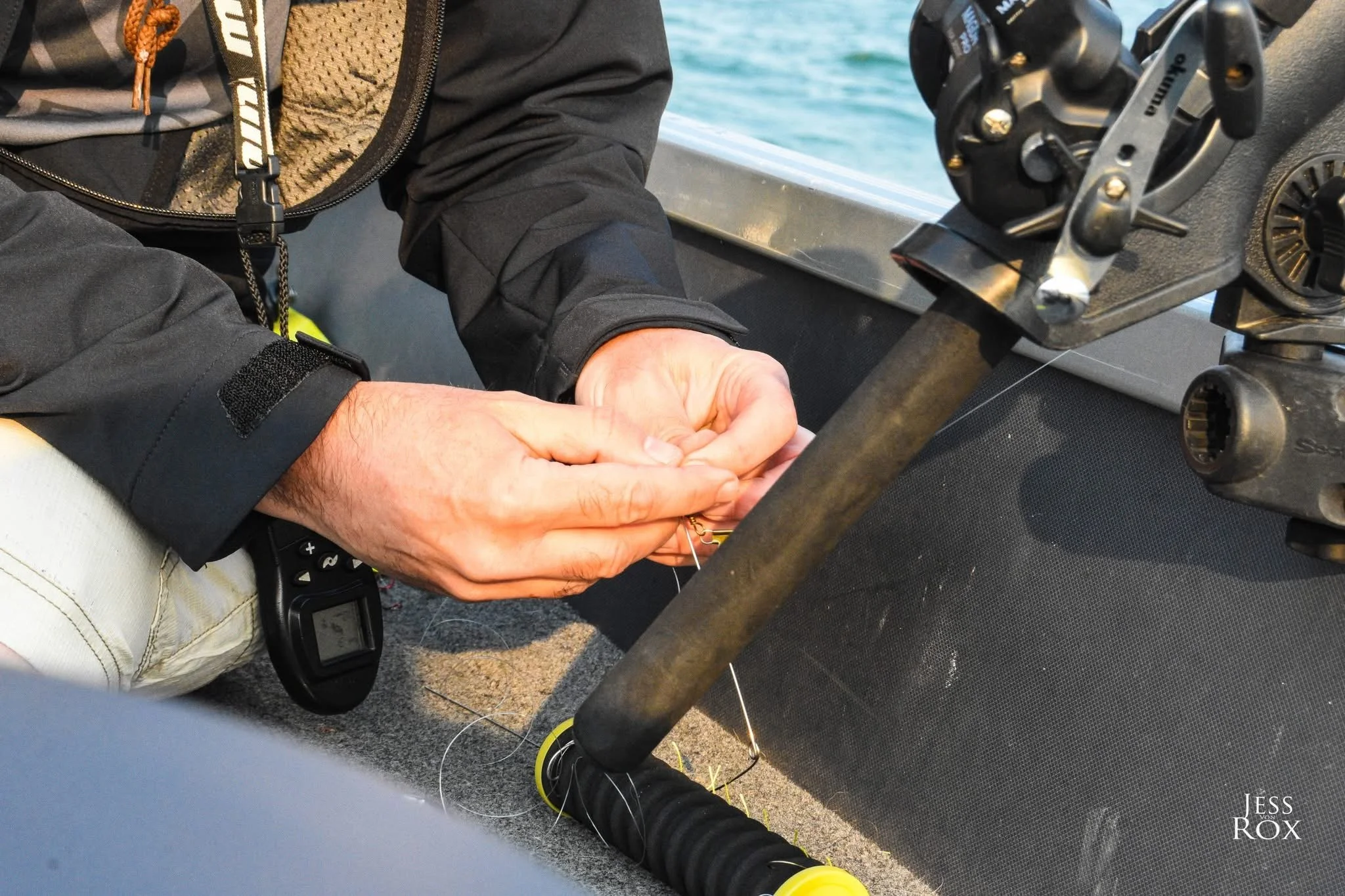
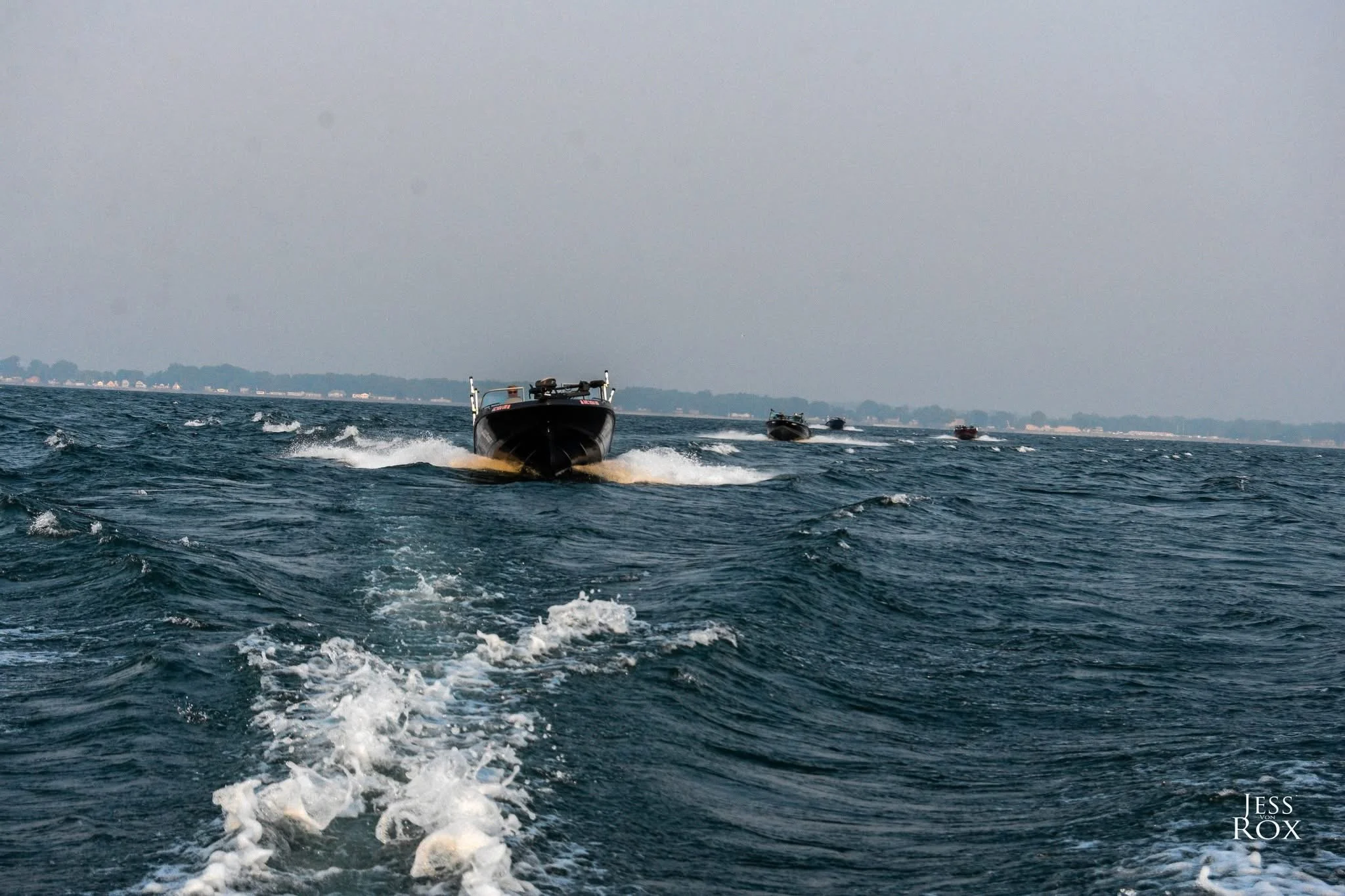
Photos Courtesy of Jess Von Rox
Trolling or drifting a harness is a bait delivery where ground is covered methodically, not quickly. Generally, harnesses are pulled between 1-2 mph. The blade is to spin freely around the line, rather than an awkward fumble and tumble against the beads. Speed can be relevant to weather conditions, time of day, behavior, and more on an ever-changing basis.
A note about blade size:
Starting around the sunrise, walleye feed upward and higher in the water column, This is the time of day when they are active in search for their next meal, so moving ‘quickly’ in terms of harness speed is advised for efficiency. When fish are rambunctious during this time, Colorado, Indiana, and willow blades are most effective due to their flash, thump, and capability at these speeds. There will be days where this pattern will produce throughout the day or into the afternoon, but what about when things start to get slow?
Captain Brandon Stanton of Team Gunsmoke Sportfishing keeps a box of components close by when he is fishing with worms.
Summertime is beloved by many for the strong, bright sunshine that brings warmth for fun under the sun. Walleye, on the other hand, are not to keen on this. While bluebird days with bright conditions are nice for BBQs and beach days, they can be especially tough on the fishing, especially in clear water. Across the great lakes, there has been an improved water clarity phenomenon over recent decades that has the walleye uncommitted. These fish will literally sit on the bottom, rooting their noses amongst the sand and silt gravel for easy pickins. Think of them as being lazy.
Throughout these conditions, pulling harnesses low and extra slowly becomes the name of the game. 1mph and even slower. This is very slow with the presentation moving along the bottom on a bouncer. We are talking so slow, the captain thinks he is going crazy in search for fish. Time seems to feel extra slow when it is like this. It is the exact opposite of burning crankbaits! This approach is about slowly enticing and seducing a strike for sluggish walleye, even at speeds below 1mph.
Non-traditional blades- this is where they shine. These are tackle options in rigging that might require some digging and snooping around shops and tackle trays. Most of them being in-line rather than flowing on a clevis. With speed, it takes more to get a clevis and blade to perform ideally.

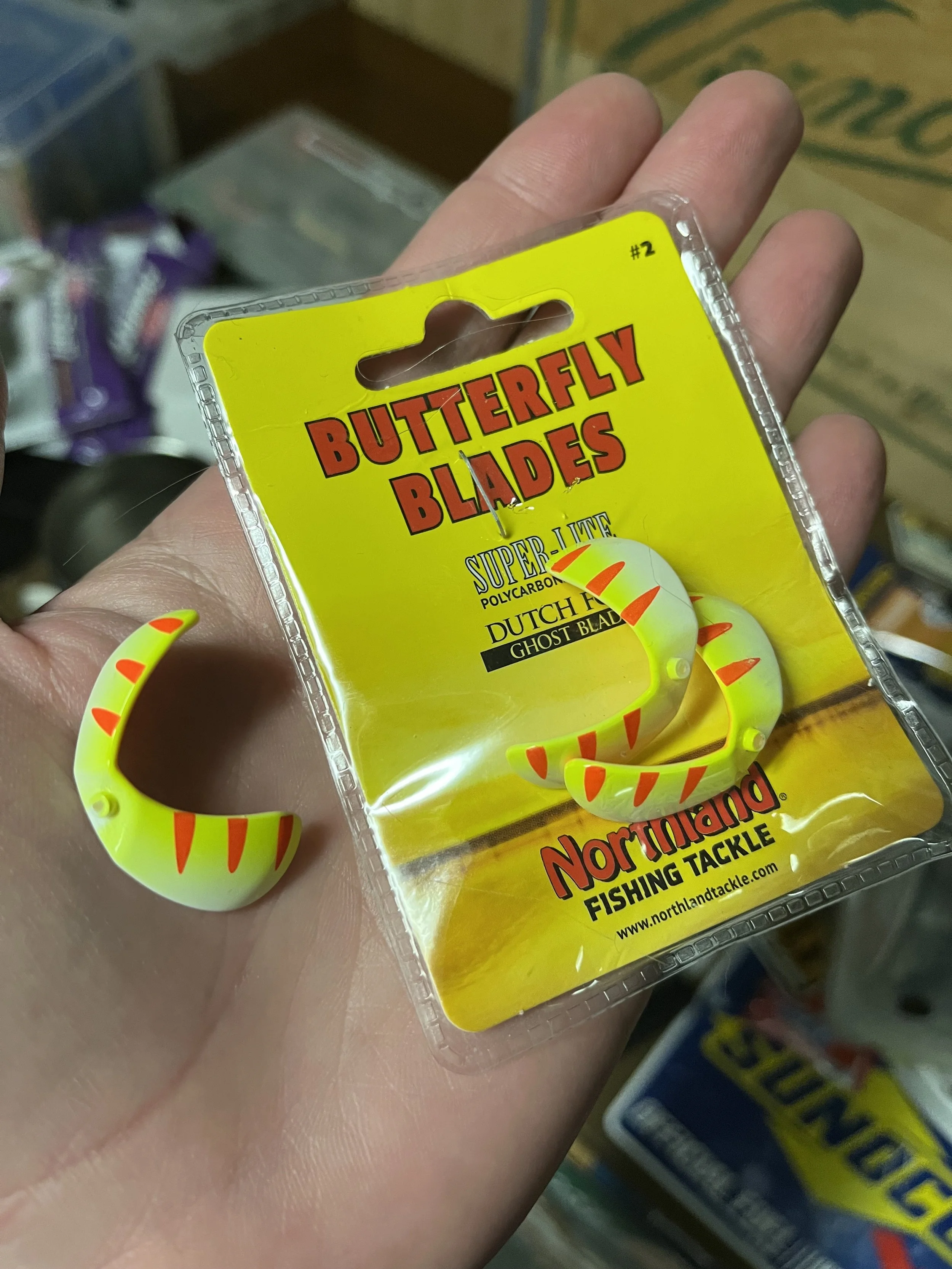

· Butterfly/ Tahoe blades- share a resemblance of a propeller. They spin freely on the line and give a subtle vibration due to their shape and surface area. These are made by Dutch Fork Custom Lures as Tahoe blades but are called Butterfly Blades when sold under Northland Fishing Tackle. Photos above and below courtesy of Northland Fishing Tackle
Even slow as ¼ mph, Butterfly Blades spin to coax a weary walleye into striking.
· Spin and Glow- excellent options in walleye trolling. You might have seen these used in salmon trolling, but larger than what would be ideal for walleye harnesses. They are foam bodies that have a rounded shape with fluted wings along the side of their body. While they are not much larger than the beads themselves, they kick off a small vibration and minimal flash. Made of foam, this can grant increased buoyancy to the bait for slow trolling or even hanging the bait right above these fish. These are made by Yakima Bait and can be found around the Great Lakes in your local trolling department.
· Hatchet blades- resemble the shape of a machete. They offer minimal flash yet provide a unique vibration. These are made by Vortex Blades (pictured on the right). These are similar in shape to whiptail blades (pictured on the left), but being in-line and ability to swim in a more circular motion is what separates them apart.
· Smiley blades- shaped like a curve, as if it is smiling to attract a fish of peculiar taste. These are designed to wobble and spin to create flash and vibration to attract fish. They are effective as they are popular, especially around the Great Lakes. These are made by Macks Lures and are available online and in-store at Franks Great Outdoors.
Disc/Wobble blades might not necessarily spin, but their shake and roll through the water produces an enticing vibration.
· Wobble/Disc blades- options that are emphasized as circular and flat to shake around and roll, sometimes with an internal rattle. These baits are special tackle items that need to be ordered online. PK Lures offers three specialized options, the Wobbler, Dakota Disc, and PK Vortex, and are available here.
What makes smiley, Vortex, and disc blades unique compared to other options for walleye fishing is found in their material. Ultra-lightweight, flexible mylar is key to their design, allowing them to spin and create a unique action at terribly slow speeds. Slower speeds can provide a challenge to achieve with heavier material, like metal. Because of their thin, plastic-like build, they can be tuned accordingly. For a tighter motion, bending the blades to a narrower angle will provide a vigorous spin, even at low speeds. Keeping the blades as they come out of the package, wide in angle, will enable more of a shake and wobble action.
Walleye will hear the wire of the bouncer on the bottom. They can hear it and respond by biting. Keep a close eye on your graph, not only to see where fish are in the column, but how they respond to your spread and presentation.
-Mark Martin, Hall of Fame Member & Professional Walleye Angler
When walleye trolling or drifting, precision is the name of focus. Understanding the depth and where the fish are in the feeding column. Depending on the targeted zone, a trolling weight of an appropriate size will get anglers to where desired. The general rule of thumb is to use 1oz for every ten feet of water being fished in. For example, 2oz for down to twenty feet of water, 3oz for down to thirty, etc. It is okay to round up to the next size when fishing depths closer to the following increment of ten feet.
An intro lesson on setting bottom bouncers at Mark Martin’s Fishing Vacation School.
What is important to remember about harness fishing is how they are pulled behind the boat at a sweet spot. You do not want them to be under the boat, but you also do not want them to be miles behind, dragging ineffectively. When bottom bouncing, the rule of 45 degrees is highly recommended for efficiency. The 45 degrees refers to the angle of the line from the rod tip or planer board down to the bottom bouncer. This is much more than dropping the rig off the side of the boat Having too much line on a lower pitch will cause the rig to a bouncer to drag, when it is best to have your bottom bouncer merely “tapping” the bottom as the motion of the troll carries on. Let it be known that there are ideal ways when fishing along the bottom. To do this in practice, slowly feed the rig and bouncer to the bottom, then lift the rod tip up 6-8’ while the reel is freely engaged. This motion will grant enough line for the presentation to be close to the bottom with enough control and having too much line out. The rule of 45 does not have to be exact, it’s just a frame of reference. You do not want to have more than that pitch when trolling. This extra motion of the rod and feeding out line gives just the right amount. As you are trolling, the boat is moving away from the rig, once bottom contact has been made, there is a steep pitch and allowing an extra 6-8’ will get your rig where it needs to be and function most effectively.
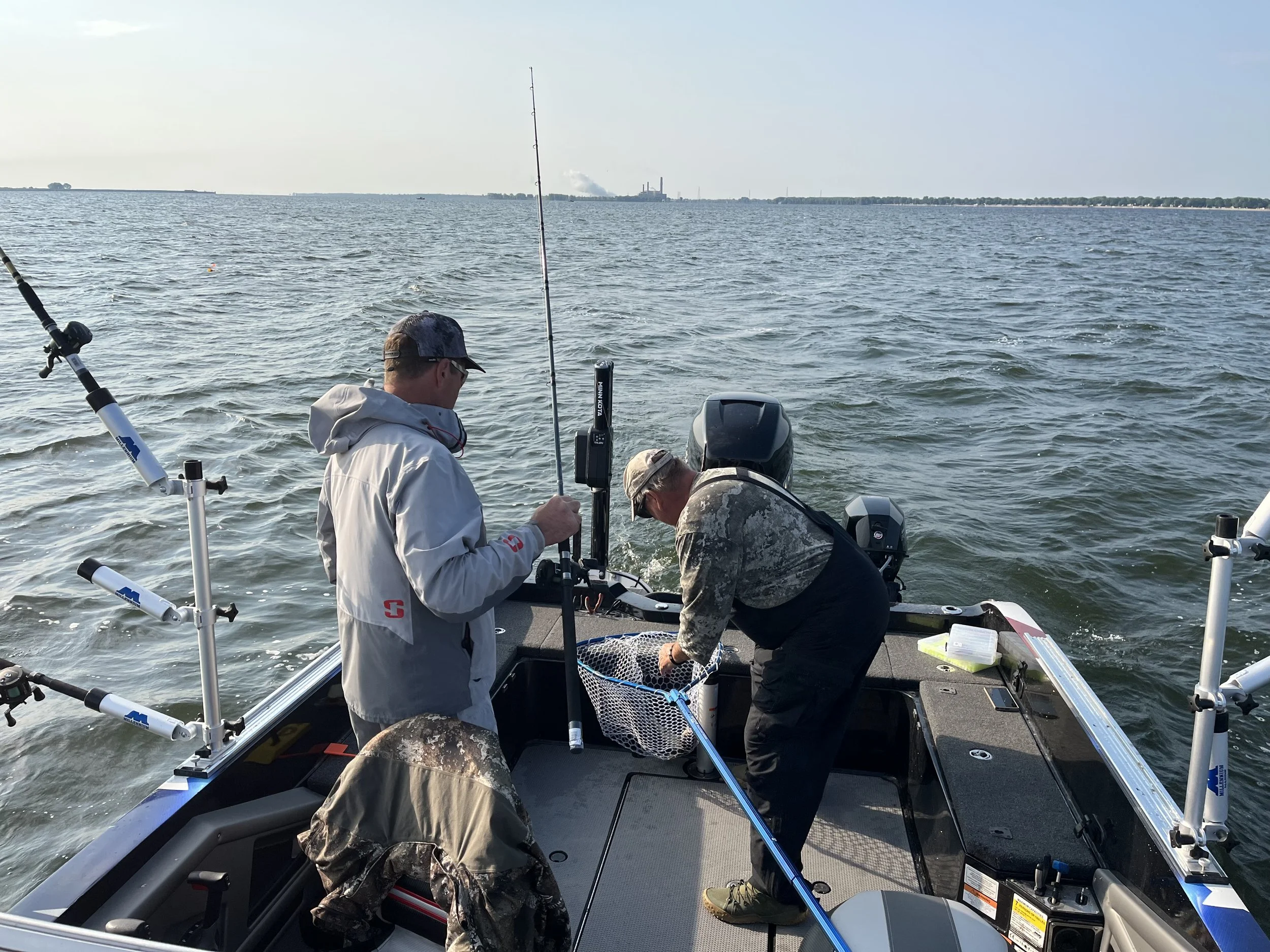
These techniques and tidbits of information work whether you find yourself trolling the Great Lakes in a grand spread of planer boards, flowing down river drifting a harness in current, or simply poking around an inland lake at the family cabin up north.
Decades of fishing experience from all over north America has contributed to share and develop these products with this knowledge. These are not new methods hot off the shelves, they are considerations for captains and anglers alike to keep as a trick up their sleeve.
Trolling walleye is a longstanding tradition around the Great Lakes. Professional walleye angler and hall-of-famer, Mark Martin, offers a specialized Fishing School in June every on Saginaw Bay, out of Linwood, Michigan. Major concepts that can take years to grasp, such as blade specifics throughout this article, can be learned during this program that acts as an effective bootcamp at teaching anglers how to sharpen their skills, understand the ins and outs of effective trolling, boat handling, rigging, and more. Martin and his pro-staff of licensed captains offer additional ice fishing schools across northern Michigan, pending conditions.
“If you want to get a real jumpstart on your knowledge and understanding of fishing, especially if you are new to walleye trolling, this program has a lot to teach those who are open to work hard and put in the effort.”
Foresight Fishing Media would like to take a moment and share a message of appreciation and recognition for Mark Martin’s Fishing Vacation School, Franks Great Outdoors, Linwood Corner Café, and Go Great Lakes Bay, for their generous accommodations and hospitality through this unique educational program recently. For further information, please visit www.fishingvacationschool.com



